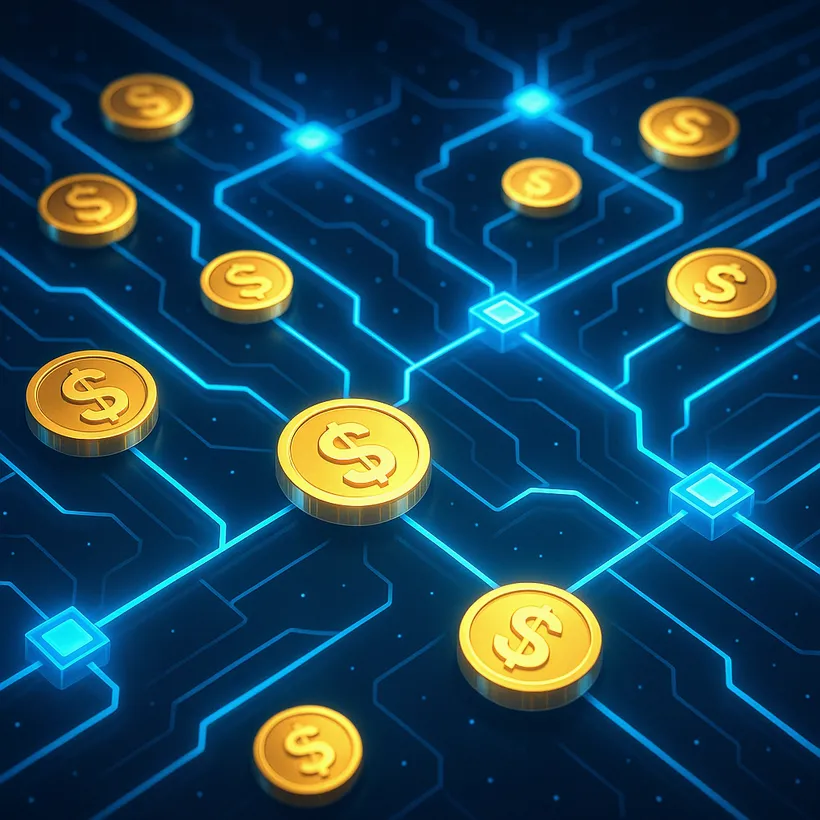The world of digital transactions has evolved rapidly, and one of the most game-changing aspects is the emergence of micropayments. Micropayments—small financial transactions typically worth cents or fractions of a dollar—have struggled to go mainstream, largely due to high transaction fees and inefficiencies in traditional payment methods. The question of How Blockchain Enables Micropayments is therefore critical to understanding the future of online business, content monetization, and the digital economy.
The Problem With Traditional Micropayments
Historically, the cost and speed of payments made it unfeasible to transact in very small amounts. Payment processors like Visa or PayPal charge flat fees or percentages that can wipe out the value of a micropayment, making it impractical for businesses to accept payments under $1. This limitation held back countless business models, such as pay-per-article content, micro-donations, and tiny in-game purchases.
Blockchain: A Micropayments Revolution
Blockchain technology fundamentally changes the math behind micropayments. Decentralized networks like Bitcoin and Ethereum allow direct, peer-to-peer transactions with low (sometimes near-zero) fees. Here’s how blockchains solve the micropayment challenge:
-
Reduced Transaction Costs: Blockchains, especially layer-2 scaling solutions and newer blockchains, significantly reduce fees compared to banks or credit cards. Networks like Lightning Network for Bitcoin or sidechains on Ethereum can handle thousands of microtransactions per second at minimal cost.
-
No Middlemen: Without intermediaries, there are no additional charges, and the risk of censorship or refunds is removed.
-
Programmable Payments: Smart contracts (self-executing code stored on the blockchain) can automate the splitting, scheduling, and verification of payments, making microtransactions between machines or between users seamless and secure.
-
Global and Inclusive: Unlike traditional banks, blockchain micropayments can be sent and received by anyone, anywhere, instantly—no bank account or credit card needed.
Real-World Applications of Blockchain Micropayments
- Content Monetization: Instead of paywalls or subscriptions, news, videos, and music can accept micropayments for single items, so users pay only for what they consume.
- In-App and In-Game Purchases: Micropayments make it easy to buy virtual goods, characters, upgrades, or features.
- IoT and Machine-to-Machine Payments: Devices can pay one another small amounts for services like data storage, bandwidth, or usage on the fly.
- Micro-donations: Fans or users can tip creators or donate small bits of crypto quickly and easily.
How to Get Started With Blockchain Micropayments
Getting involved in blockchain micropayments is easier than ever. Major exchanges like MEXC support transfers in a wide variety of cryptocurrencies and make it simple to buy, sell, or send tiny amounts globally. By signing up with the referral code mexc-CRYPTONEWER, you gain access to one of the world’s most dynamic crypto trading platforms.
- Fast and low-cost transactions: MEXC supports networks optimized for microtransactions, giving you cost-effective access.
- Broad crypto support: Trade or transfer a wide range of tokens ideal for micropayments.
- User-friendly interface: MEXC makes managing and monitoring your blockchain micropayments simple.
Sign up with MEXC and use code mexc-CRYPTONEWER to start exploring the potential of blockchain-powered micropayments today.
Blockchain Networks Enabling Micropayments
You don’t have to stick with just Bitcoin or Ethereum. Several other blockchain projects are specifically focused on enabling fast, cheap, and scalable microtransactions:
- Stellar (XLM): Focused on low-fee, cross-border transfers and microtransactions.
- Nano: Designed for instant fee-less micropayments.
- Polygon (MATIC): Scalable layer-2 for ultra-fast, cost-effective Ethereum transactions.
- Lightning Network: Bitcoin’s layer-2 platform that facilitates rapid, tiny BTC transactions nearly instantly.
These networks each have their own advantages, from transaction speed to compatibility, depending on your project’s needs.
The Future of Micropayments: Blockchain’s Role
As more creators, businesses, and platforms see the efficiency, transparency, and low costs of blockchain-powered micropayments, we can expect an explosion of new applications—from decentralized social media and AI payment models to streaming services and beyond.
A platform like MEXC is your entry point into this new world. Don’t forget to use code mexc-CRYPTONEWER to unlock extra benefits on your journey.





